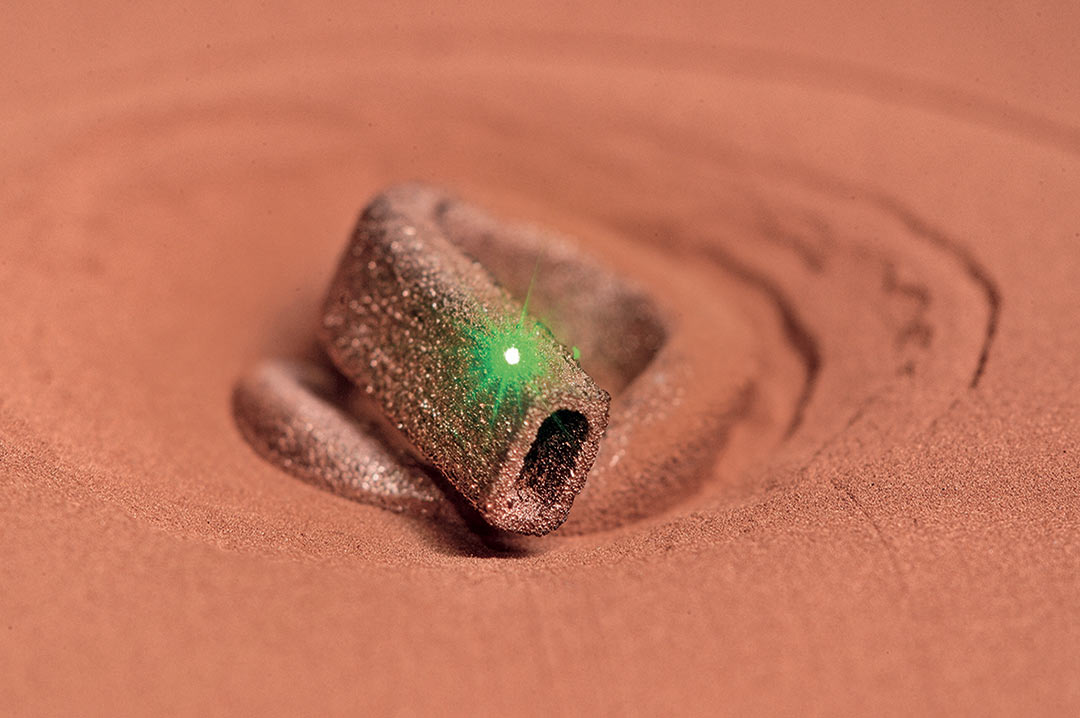Researchers at the Fraunhofer Institute for Laser Technology (Fraunhofer ILT) are developing a green laser SLM (SELECTIVE LASER MELTING) 3D printing system for printing pure copper and copper alloys. The project has been dubbed “SLM in Green.” SLM technology, conceived in Germany in the mid-1990s, blends (and doesn’t sinter) metallic powders into a solid and homogeneous mass thanks to a high-power laser, according to the 3D drawing inserted.
Known for its malleability and typically ductile composition, copper is a seemingly ideal material for metal 3D printers. In addition, the metal exhibits a level of thermal conductivity second only to silver, and high electrical conductivity making it desirable for industrial applications. But its compatibility with 3D printing is low. That’s because pure copper deflects a lot of the light from an infrared laser, rather than getting melted by it.

“Depending on surface properties, pure copper reflects up to 90% of laser radiation in conventionally used wavelengths of 1 µm,” says Daniel Heussen, a research fellow in the Rapid Manufacturing group at Fraunhofer ILT.
What this means is that hardly any laser energy actually ends up penetrating the copper, while the reflected light can cause havoc as it bounces around. Furthermore, copper does actually start to absorb the infrared light as it transitions from solid to liquid, but it’s hard to control when and where this transition occurs. Unless, of course, a different kind of laser is used.
And that’s the thinking behind Fraunhofer ILT’s ambitious new “SLM in Green” project, which will see a team develop a green light laser beam that can melt both pure copper and copper alloys.
The key, perhaps, is in the color of the laser. In a green laser, the wavelength is significantly longer, at 515 nm in comparison to 1µm. According to ILT “This means that less laser power output is needed for a stable process. Furthermore, the laser beam can be focused more precisely, allowing it to manufacture far more delicate components using the new SLM process.”
The project is expected for completion mid 2019 and is funded by German Federation of Industrial Research Associations (AiF).






